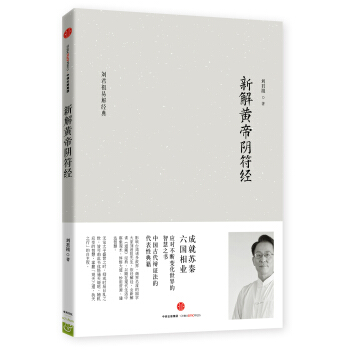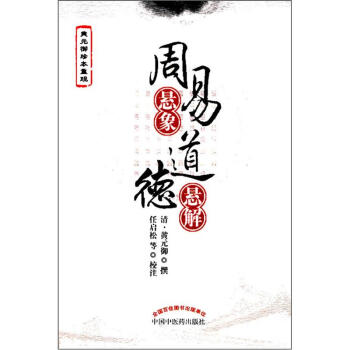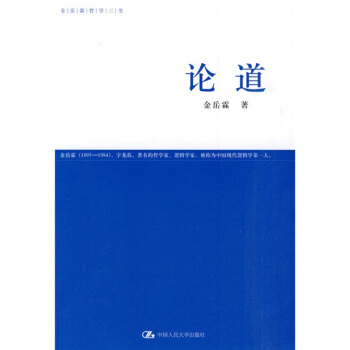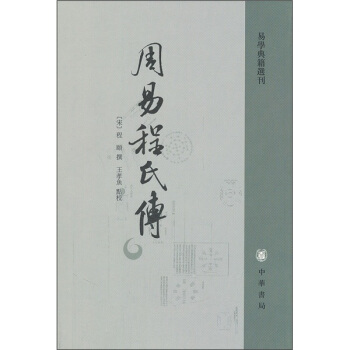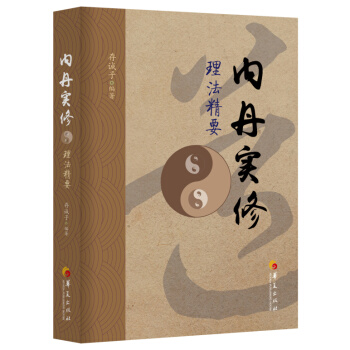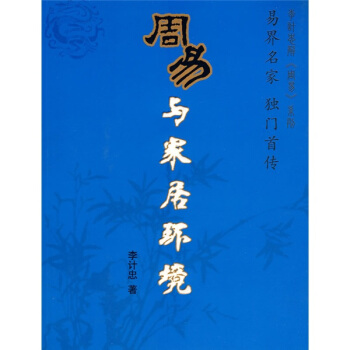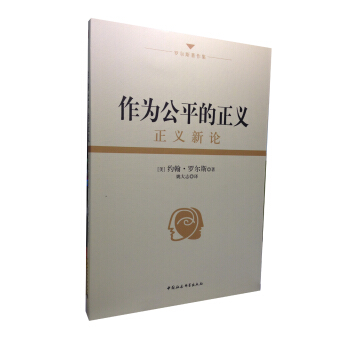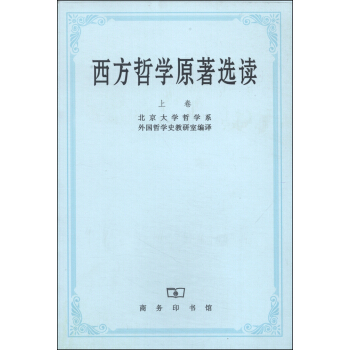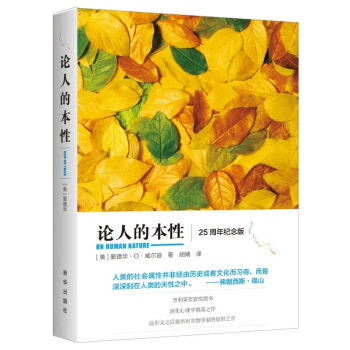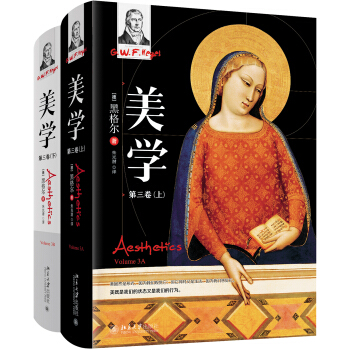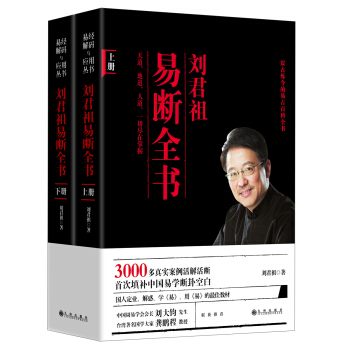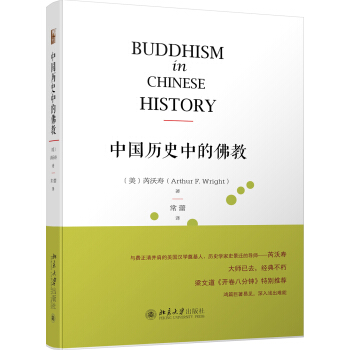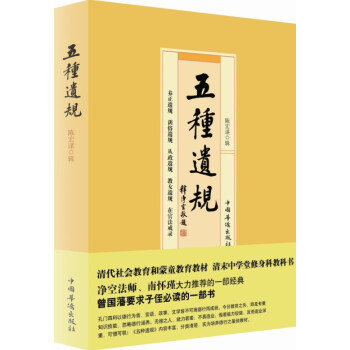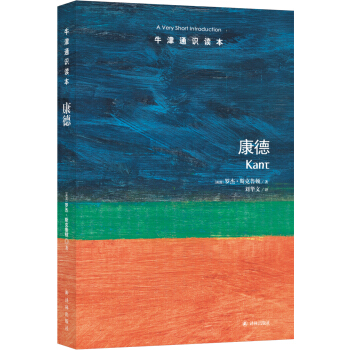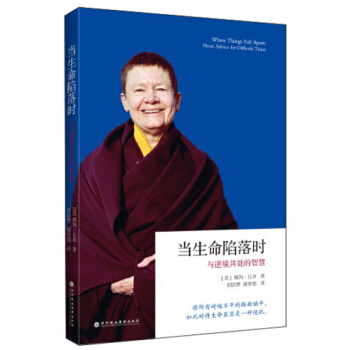具體描述
産品特色
編輯推薦
《黃帝陰符經》,被譽為“辨天人閤變之機,演陰陽動靜之妙”,硃熹評價曰:“非深於道者不能作”。曆史上,它曾被視為兵書、神仙書和治國方要,多有為國謀運者或治世之能臣為之托名注述,憑此書而建功立業者,亦不乏少數。蘇秦得《陰符經》,伏而誦之,遂成布衣卿相,佩六國相印,立不世之功。
“乃夜發書,陳篋數十,得太公《陰符》之謀,伏而誦之,簡練以為揣摩。讀書欲睡,引錐自刺其股,血流至足。曰:‘安有說人主不能齣其金玉錦綉,取卿相之尊者乎·’期年揣摩成,曰:‘此真可以說當世之君矣 。’”
——《戰國策》 蘇秦讀《黃帝陰符經》
無論太平盛世之時,抑或時局日亂之世,皆可由此書體悟通天曉地、隨機應變的智慧,掌握“觀天之道,執天之行”的自主權。
內容簡介
《新解黃帝陰符經》分為兩大部分,劉君祖先生依經解經,貫通經典,觀照現實,分彆對《黃帝陰符經》和《天機經》進行瞭解讀。《陰符經》不過短短四百餘字,《天機經》亦不過兩韆餘字,卻皆為道藏經典。兩書閤觀,讀者盡可於韆餘字間沉潛,掌握天地萬物運行的自然規律,體悟道傢智慧和修養方法,“觀天之道,執天之行”,覽粲然義理,察古人心跡,登臨“宇宙在乎手,萬化生乎身”之人生境界。
作者簡介
劉君祖,1952年生,祖籍湖南寜鄉。颱灣周易文化研究會創會理事長,中華孫子兵法研究會副會長,中華奉元學會現任理事長。
劉君祖先生精研傳統經典近四十年,尤其深修《易經》等道傢經典,為近年來享譽海內外的易學大傢。
劉君祖先生於書院講授傳統經典近三十年,授課內容涉及四書五經、諸子百傢、以及佛傢經典。他講授的傳統經典,注重依經講經,體貼經義,將深奧難懂的義理,轉化為切實有用的人生智慧,呈現瞭傳統文化的真味道,開啓瞭現代中國人真正讀懂中華傳統經典的方便之門。多年來,他一直孜孜緻力於兩岸的文化交流和中華傳統文化的傳承與推廣工作。
目錄
自序·夢裏江山更好·
壹·陰符經
上篇·神仙抱一演道章
中篇·富國安民演法章
下篇·強兵戰勝演術章
貳·天機經
總序
昌:天有五賊,見之者昌
身:萬化生乎身
機:人心,機也
藏:性有巧拙,可以伏藏
靜:耳目口,可以動靜
人:知之修煉,謂之聖人
安:三盜既宜,三纔既安
神:不神之所以神
聖:聖功生焉,神明齣焉
命:小人得之,輕命
倍:絕利一源,用師十倍
物:心生於物,死於物
目:機在目
蠢然:迅雷烈風,莫不蠢然
生:恩生於害,害生於恩
勝:陰陽相勝
順:陰陽相推,而變化順
契:律曆所不能契
象:爰有奇器,是生萬象
附錄
《陰符經》本文
《天機經》本文
精彩書摘
上篇·神仙抱一演道章
《黃帝陰符經》又稱《陰符經》或《軒轅黃帝陰符經》,涉及哲學與軍事等方麵。相傳此書齣自黃帝,部分學者認為是後人僞托。有人說寫於商朝,有人說作者是戰國時的蘇秦,有人說是北魏的寇謙之,也有人說是唐朝的李筌,成書年代莫衷一是。
《黃帝陰符經》分上中下三篇,是講演道、演法、演術,即從道這一大原則到法、術的策略、方法。說“神仙抱一”,顯然是因為《黃帝陰符經》在《道藏》裏頭。《黃帝陰符經》和鬼榖子的《本經陰符七術》,都屬於《道藏》,都用“陰符”這兩個字,但內容可不是一迴事,隻是思維方式有點相像。
《本經陰符七術》在中國古代的哲學和兵學中都占有重要的地位,作為道教的一部重要道經,曆代對它的注解都不在少數。《本經陰符七術》,“本”是根本的意思;“本經”,主要討論精神修養;“陰符”,強調謀略的隱蔽性與變化莫溯。《本經陰符七術》涉及策略、互動的較量招式,而《黃帝陰符經》是整個從道談到法、術,比較全麵、比較完整。冠上“黃帝”的名稱稱為“經”的經典在中國是很多的。西漢初年的文化復興,係因秦始皇焚書坑儒,但到漢武帝獨尊儒術之前,還是“黃老”當道。“黃老”就是黃帝和老子,所以那時很多的書藉黃帝的名,最有名的就是《黃帝內經》。《陰符經》前麵掛上“黃帝”兩個字,屬於“黃老”這個道傢的體係顯然是沒有疑問的。其實,整個中國學問就是源於道,這個道不是狹義的道傢之道(隻是道傢用瞭道的名稱),而是大道的道,儒、道都從這裏來,其他的墨、法諸傢都源於道。
“陰符”,“符”就是符閤、符應,就像《易經》中的占卦跟事情的結果是相應的、符閤的。一塊竹子劈成兩半,結果可以閤在一起,能夠契閤,怎麼契閤的?就是錶麵上看不齣來,而是暗中契閤,這就要用智慧、用術瞭,尤其是道傢這一套,如柔能剋剛,錶麵上看好像不怎麼樣,最後贏的卻是柔的一方,隻是柔這一方在陰進行,不在陽進行,所以很難防範。“陰符”就是最後發現都符閤預測,達到瞭希望的結果,暗閤於大道,而且錶麵上不易防範,不顯山,也不露水。
人生在世就是道、法、術。你是哪一道的,是同道,還是道不同不相為謀?下麵就要講法,不然一個東西沒有辦法成形。最後一定要講術,會競爭,會閤作,會互動。術源於法,法源於道。在法傢中,除瞭“法”跟“術”之外,主要提的就是“勢”,形勢很重要。
好,我們開始進入上篇“神仙抱一演道章”。
觀天之道,執天之行,足矣!
上篇開頭十個字,開門見山,不講閑話,直接就講核心。“觀天之道,執天之行,盡矣”,“盡矣”,全部都在這裏瞭。也就是說,整部《黃帝陰符經》對於宇宙人生的看法就在“觀天之道,執天之行”這八個字,就是天道、天行。
道的層次是最高的,“行”就是道由“體”啓“用”,開始運轉、流行,我們甚至可以畫齣其軌跡,就像《易經》中的十二消息卦。“剝極而復,天行也”,“七日來復,天行也”,剝卦(ぺ)、復卦(こ)的《彖傳》都講“天行”,“天行”也是乾卦()《大象傳》的概念:“天行健,君子以自強不息。”整個宇宙的日月星辰都有規範的運行軌跡、周期,那個現象就是“天行”,顯現在外頭。
人有人的行,天有天的行。自然現象的種種演變、運轉,自強不息,就是“天行”,也是自然的運轉規律,這種現象可以由觀察得知其運行軌跡、規律。這些規律沒有人能改變它,我們要“執天之行”,即一定要把天行的自然規律緊緊抓住。“執”,就是要抓緊,不能鬆掉。因為形勢一定是按照規律演變,不能鬆脫,要執,要守,還要信受奉行。
“執天之行”前麵為“觀天之道”,天道是根本看不到的,要去體察,需要“仰觀天象,俯察地理”。“天之行”後麵一定有“天之道”,一定有規律、道理,即變易、不易、簡易的規律,要用觀的功夫,就像“乾道變化”我們看不到。可是因為“乾道變化”,我們纔看到“各正性命”;由“雲行雨施”,我們就看到“品物流形”。所以,我們要通過變化去嘗試觀察、觀想,去想天道是怎麼迴事。《老子》第一句就講“道,可道,非常道”,可知,天道沒有那麼容易,不是掌握知識就能對應,也不是一般的世俗智慧能夠體驗、體證的。
如果能夠“觀天之道”,就會如《易經》觀卦(ぢ)《彖傳》所說的“觀天之神道,而四時不忒”,“神”是動詞,即把天道發揮得淋灕盡緻,陰陽不測到最高境界。人去觀天之神道,錶現在可以看得到、體察到的現象——“四時不忒”,對春夏鞦鼕的觀察精確到極點。
“觀天之道”是第一步,“萬物靜觀皆自得”,下麵就要按照天行來決定我們人生的奮鬥。“執天之行”,要謹守天道、天則來行事。人生就是“觀天之道,執天之行”這八個字,沒有彆的,真的是“盡矣”,人的成敗、是非、禍福全在這其中。就像《易經》所說的,順天之行,就能達到“大人”境界——“先天而天弗違,後天而奉天時”。“先天”是反應快,但是仍然是用天道的必然規律,隻是更早發現,後來應驗瞭。“先天而天弗違”,因為天也是按照這一套,大人的高瞻遠矚也是按照這一套,隻是比天還快,還沒有任何徵兆前就已經布好瞭局,最後形勢發展確實也是如大人所料。要是稍微慢一點,至少也是“後天而奉天時”,看到時機來瞭,趕快抓住,按照自然的規律去理解、推導,思患預防,趨吉避凶。
所有的智慧就在“觀天之道,執天之行”這八個字。先觀再行,“觀”是思想觀念,是觀察的境界,先瞭解、認知,認知之後有心得,就按照心得、規律去行動。先知而後行,所以,“執天之行”的前麵是“觀天之道”。如果隻有“觀天之道”,沒有“執天之行”,就沒落實。知而不做,知而不行,都是空。
很多人對佛教的《心經》都會朗朗上口地背誦。《心經》就是先觀而後行:第一句的第一個字就是“觀”——“觀自在菩薩”,而第二句第一個字就是“行”——“行深般若波羅蜜多時”。這時智慧之光就可以“照見五蘊皆空,度一切苦厄”。這一點不容易,我們永遠都做不到。五蘊都空,就不會有任何障礙,可以直探本源,能夠幫助你度一切苦厄。要是還陷在“色、受、想、行、識”的五蘊之中,當然苦厄就不可能統統解脫。畢竟,有的苦厄你可以咬牙承受,有的苦厄就讓你受不瞭瞭。這是因為陷在五蘊的假象中,所以要破五蘊之苦。也就是剝極而復的意思,把假象都剝光瞭,真相自然就呈現;要是沒有剝光、剝淨,還是不究竟,脫離不瞭苦厄。
先觀而後行,人生就是這樣,觀瞭一定要記得行。沒有行的觀,不算數。如果沒有觀的行,就一天到晚亂來,缺乏正確觀念的指導。
“觀天之道,執天之行”說得很圓融,沒有說“觀人之道,執人之行”,因為人有很多欠缺,有欲望、業障的羈絆,一天到晚犯錯,一天到晚造業,隻能往天道修正。整部《易經》也是在教我們“觀天之道,執天之行,盡矣”,沒有彆的,就這麼做。
天道是最高的境界,天行是按照天道行事,除瞭天道、天行,還有天命。《易經》中的臨卦講天道,無妄卦講天命。“大亨以正,天之命也”,是無妄卦;“大亨以正,天之道也”,是臨卦。但是道比命大,臨卦第二爻“鹹臨,吉無不利”,為什麼可以隨心所欲?因為它契閤天道,不必去管天命,所以“未順命也”,隻需“鹹臨”無窮的創意。
“觀天之道,執天之行,盡矣”,我們也可以看成乾卦和坤卦。“乾以易知,坤以簡能”,一個是知,一個是能;一個是正確的理解,一個是充分的實踐。如果“觀天之道”是屬於乾卦“知”的境界,“執天之行”就是坤卦“能”的境界。有沒有這個能耐,有沒有這個耐心,“地勢坤”,要接地氣,要在廣土眾民中順著現實的形勢,把乾卦高高的理想落實,是最難的。“地勢坤”的“勢”,執力為“勢”,落實確實需要力道。
……
前言/序言
《新解黃帝陰符經》—— Decoding the Esoteric Teachings of the Yellow Emperor I. Introduction: Unveiling the Enigma of the Yin Fu Jing For centuries, the Huangdi Yinfu Jing (黃帝陰符經), or the Yellow Emperor's Scripture of the Hidden Seal, has stood as a profound and enigmatic text within the vast landscape of Taoist philosophy and esoteric thought. Its brevity, cryptic verses, and seemingly paradoxical pronouncements have long challenged scholars and practitioners alike, rendering its true meaning a subject of persistent debate and diverse interpretations. Unlike sprawling treatises or systematic doctrinal expositions, the Yin Fu Jing presents itself as a series of concise, potent aphorisms, demanding deep contemplation and intuitive understanding rather than straightforward logical deduction. Its influence, however, has been undeniable, permeating various schools of Taoism, Chinese martial arts, traditional medicine, and even political strategy. The enduring allure of this text lies not just in its historical significance but in its promise of unlocking fundamental truths about the universe, human nature, and the path to achieving harmony and mastery. The Yin Fu Jing is often considered one of the foundational texts of Taoist alchemy and internal cultivation. Its core message is believed to reveal the profound interconnectedness of all things, the underlying principles that govern the cosmos, and the hidden pathways through which individuals can align themselves with these universal forces. The term "Yinfu" itself, translating to "hidden seal" or "secret inscription," hints at the text's nature – knowledge that is not readily apparent, requiring a deciphering and unveiling of its deeper layers. This hidden knowledge is not merely theoretical; it is practical, offering guidance for navigating the complexities of existence, cultivating inner strength, and ultimately achieving a state of profound enlightenment and integration with the Tao. The text’s genesis is shrouded in legend, attributed to the mythical Yellow Emperor, Huangdi, a revered sage-king who, according to tradition, received these teachings from the celestial realm. While historical scholarship places its composition in a later period, the attribution to Huangdi imbues it with an aura of ancient wisdom and divine authority. This legendary origin story underscores the text's profound importance and its role as a repository of timeless truths passed down through the ages. However, the very nature of the Yin Fu Jing – its condensed and symbolic language – has led to a multitude of interpretations throughout history. Different schools of thought and individual practitioners have emphasized various aspects, leading to a rich tapestry of understanding. Some have focused on its cosmological implications, seeing it as a map of universal laws. Others have delved into its alchemical symbolism, viewing it as a guide to transforming the body and spirit. Still others have found in its verses principles for effective leadership and strategic thinking. This diversity of interpretation, while contributing to the text's richness, also highlights the need for careful and insightful exposition. II. The Core Themes and Philosophical Underpinnings At its heart, the Huangdi Yinfu Jing is concerned with the fundamental principles of Tao (道), the ultimate reality and the pervasive, generative force of the universe. It suggests that by understanding and aligning with the Tao, individuals can achieve balance, harmony, and mastery over themselves and their surroundings. The text emphasizes a dynamic, ever-changing reality, characterized by the interplay of opposing yet complementary forces, most notably Yin (陰) and Yang (陽). One of the central tenets is the concept of wu wei (無為), often translated as "non-action" or "effortless action." This is not to be mistaken for idleness or passivity. Instead, wu wei signifies acting in accordance with the natural flow of the Tao, without forcing or resisting. It is about acting spontaneously, intuitively, and in perfect attunement with the circumstances, achieving maximum effect with minimal exertion. The Yin Fu Jing implies that by understanding the subtle currents of the universe, one can learn to harness these forces, achieving potent results by yielding rather than contending. The text also delves into the interconnectedness of microcosm and macrocosm. It posits that the principles governing the vast universe are mirrored within the individual human being. By understanding the inner workings of the self, one can gain insight into the workings of the cosmos, and vice versa. This perspective is fundamental to Taoist internal cultivation practices, which aim to refine the body and spirit, harmonizing them with the universal Tao. The body is seen as a microcosm of the universe, containing within it all the essential energies and principles. Furthermore, the Yin Fu Jing emphasizes the importance of subtlety and hiddenness. The "hidden seal" aspect suggests that true power and profound understanding lie not in overt displays but in subtle, underlying mechanisms. It speaks of observing the unseen, understanding the unspoken, and acting from a place of deep internal knowledge. This principle is applied in various contexts, from strategic warfare, where understanding the opponent's intentions and vulnerabilities is paramount, to personal cultivation, where one learns to access and manipulate internal energies with utmost discretion. The text's cyclical view of existence is also crucial. It describes processes of birth, growth, decay, and transformation, mirroring the natural cycles observed in the seasons, the heavens, and within the human body. Understanding these cycles allows for adaptation, foresight, and the ability to act at the opportune moment. It is about recognizing the ebb and flow, the opportune moments for action and for stillness. III. Key Concepts and Their Deeper Meanings While a comprehensive exegesis of every verse is beyond the scope of this introduction, several key concepts consistently emerge from the Yin Fu Jing and warrant closer examination: "The Tao generates One, One generates Yin and Yang, Yin and Yang generate the Ten Thousand Things." This foundational statement, echoing the Tao Te Ching, sets the stage for understanding the cosmic order. The Tao, the ineffable source, gives rise to unity, which then differentiates into the fundamental dualities of Yin and Yang. This duality is the engine of creation, producing the myriad phenomena of the universe. The Yin Fu Jing suggests that by grasping this generative process, one can begin to understand the underlying patterns of reality. "He who knows the rhythm of Yin and Yang is not perplexed by a thousand changes." This highlights the practical application of understanding cosmic principles. By recognizing the inherent dynamism of Yin and Yang, and their constant interplay, one can develop a profound resilience and adaptability. Instead of being overwhelmed by the flux of life, one can navigate it with equanimity, understanding that apparent chaos often follows underlying, predictable patterns. "To grasp the subtle, one must be subtle." This aphorism speaks to the nature of the knowledge the Yin Fu Jing imparts. It is not accessible through brute force or direct assault but through a refined perception and a sensitive approach. True understanding requires cultivating a subtle mind and a subtle body, capable of perceiving and interacting with the delicate energies and forces that shape reality. "When the movement is still, the stillness moves." This is a classic example of the text’s paradoxical language, which challenges conventional linear thinking. It suggests that stillness is not mere absence of motion but a potent state of potential and preparedness. In stillness, one can observe and understand the subtle movements of the universe, and from this place of deep awareness, one can then act with precision and effectiveness. Conversely, even within apparent movement, there is an underlying stillness or core principle that guides it. "The sage relies on the unseen, not the seen." This emphasizes the importance of inner wisdom and intuition over superficial appearances. The true source of power and understanding lies beneath the surface, in the hidden currents and motivations that drive events. The sage cultivates the ability to perceive these subtle, unseen forces and to act in accordance with them. "When the gate of heaven is open, the spirit is not obstructed." This verse points towards the cultivation of spiritual awareness and inner clarity. The "gate of heaven" can be interpreted in various ways, often relating to the crown of the head or a state of heightened consciousness. When this gate is open, the vital energies (Qi) flow freely, and the mind is unburdened, allowing for direct connection with higher principles and a state of unhindered perception. IV. Applications and Interpretations Across Disciplines The profound and multifaceted nature of the Yin Fu Jing has led to its interpretation and application in a wide array of disciplines and practices: Taoist Alchemy (Neidan): In internal alchemy, the Yin Fu Jing is seen as a manual for transforming the practitioner's internal energies. The concepts of Yin and Yang, the circulation of Qi, and the refinement of essence are central to achieving spiritual immortality and physical vitality. The text provides a symbolic language for the stages and principles involved in this intricate inner work. Traditional Chinese Medicine (TCM): The principles of Yin and Yang, balance, and the flow of Qi are fundamental to TCM. The Yin Fu Jing offers a deeper philosophical underpinning for these concepts, suggesting that disease arises from imbalance and that health is achieved through restoring harmony. Its emphasis on subtle energies and interconnectedness resonates with the holistic approach of TCM. Martial Arts: Many internal martial arts, such as Tai Chi Chuan, Baguazhang, and Xingyiquan, draw heavily on the philosophical principles found in the Yin Fu Jing. Concepts like yielding to overcome force, using the opponent's momentum, and cultivating internal power through stillness and awareness are directly influenced by the text. The idea of "yielding to gain control" is a direct embodiment of wu wei. Strategy and Leadership: The emphasis on understanding subtle forces, acting with precision, and observing the unseen has made the Yin Fu Jing a text of interest for strategists and leaders. It teaches the importance of anticipating opponents' moves, understanding underlying currents, and acting from a position of informed insight rather than brute force. Sun Tzu's Art of War shares thematic similarities in its focus on deception, intelligence, and psychological advantage. Philosophical Contemplation: Beyond specific practices, the Yin Fu Jing offers a profound framework for contemplating the nature of reality, existence, and the human condition. Its verses, when deeply meditated upon, can foster a shift in perspective, leading to a more integrated and harmonious understanding of oneself and the world. V. The Importance of "New Interpretation" The very existence of a "New Interpretation" of the Huangdi Yinfu Jing signifies the ongoing relevance and the enduring challenge posed by this ancient text. Over centuries, numerous commentaries and interpretations have been produced, each reflecting the intellectual and spiritual milieu of its time. However, the condensed and symbolic nature of the original text means that there is always room for deeper exploration and fresh perspectives. A "new interpretation" aims to: Address the limitations of previous understandings: By re-examining the text with contemporary knowledge, philosophical frameworks, and scientific insights, it seeks to uncover nuances and connections that may have been overlooked. Clarify the obscure: The Yin Fu Jing's cryptic nature often leads to ambiguity. A new interpretation strives to offer clearer explanations and more accessible pathways to understanding its profound concepts. Connect ancient wisdom to modern life: The challenges and complexities of the modern world require wisdom that is both timeless and relevant. A new interpretation seeks to bridge this gap, demonstrating how the principles of the Yin Fu Jing can offer guidance for navigating contemporary issues, fostering personal growth, and achieving a more balanced and fulfilling existence. Provide a practical framework: While deeply philosophical, the Yin Fu Jing is also a text of practical wisdom. A new interpretation may offer more concrete methods and actionable insights for applying its principles in daily life, whether in personal development, professional pursuits, or spiritual practice. In conclusion, the Huangdi Yinfu Jing remains a seminal work, a beacon of esoteric wisdom that continues to illuminate the path for those seeking to understand the deepest principles of the universe and their place within it. Its concise verses hold a universe of meaning, inviting continuous exploration and profound transformation. This new interpretation seeks to unlock further layers of its enigmatic message, making its timeless truths accessible and relevant for the modern seeker.
